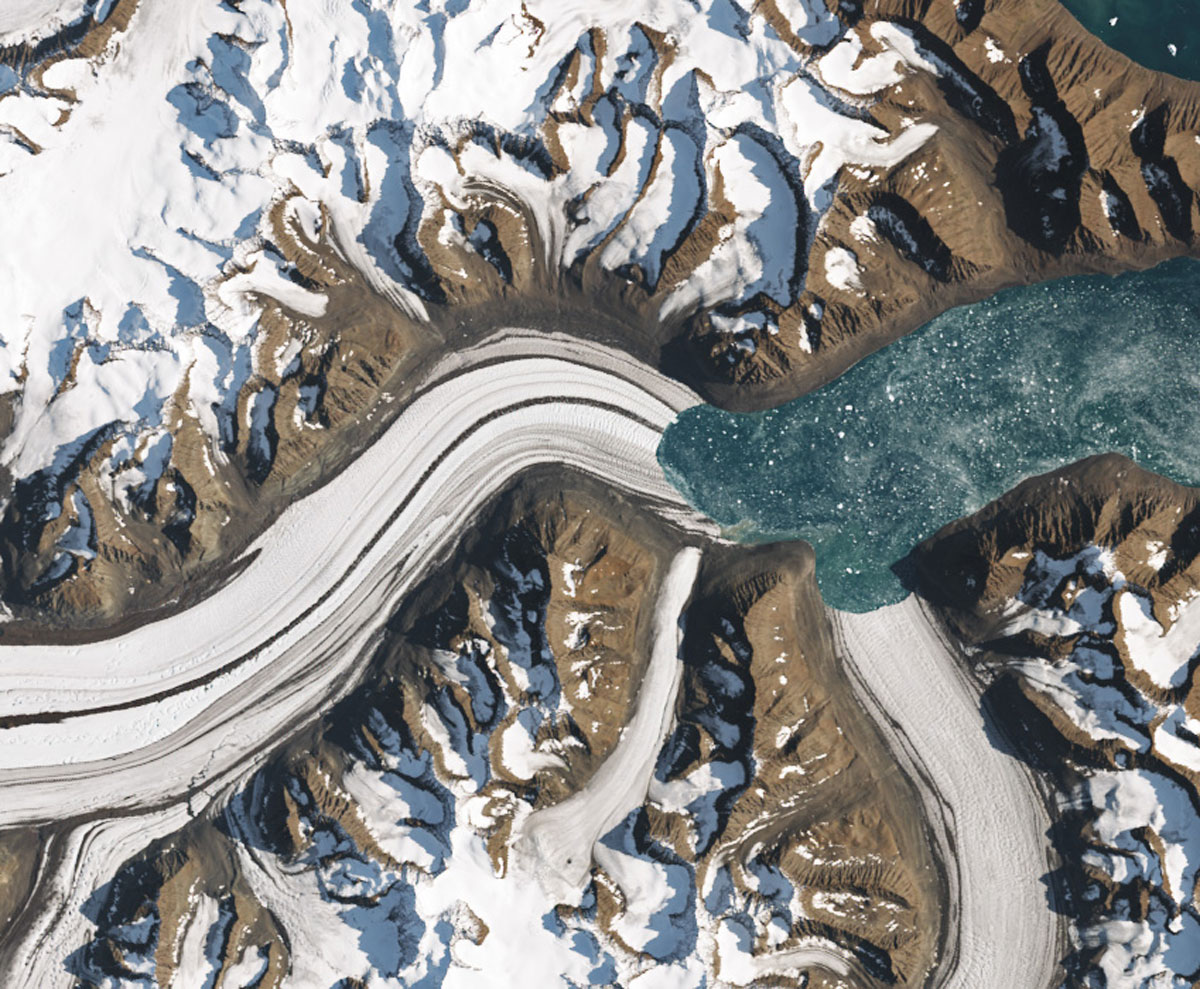Icy Pi: This graceful glacial formation once looked like an intricately crafted Pi, but over the years global warming and ice melt have removed a whole corner of the icy mathematical symbol. Instead of glacier ice, you can now see the greenish water of the fjord.
The world‘s glaciers are in retreat. The ice masses of Iceland, Alaska and Greenland are melting ever faster as a result of global warming. But not all white giants are retreating uniformly – around one percent of the world‘s glaciers are changing in spurts. Phases of stagnation or even growth alternate with times when the glacier flows particularly quickly.
These glacier surges happen because accumulated excess meltwater at the base of the ice masses acts like a lubricant: it facilitates the movement of the glacier by lubricating the contact area between the glacier and the ground. Every 15 to 100 years, these icebergs slide forward in spurts of up to two years, only to build up new ice in their upper part during the subsequent rest phase.
A Greenlandic glacier through the ages
But it is precisely these calm phases that can have dramatic consequences, especially for glaciers flowing into the sea: their rapid advance has pushed the glacier tongues far into the water of the adjacent fjords or coastal strips. When the glaciers then enter the inactive part of their cycle, these ice fronts are exposed to the waves and tides. As a result, their ice melts and the glacier front retreats again – often even faster and further than the sliding ice masses originally moved forward.
This is exactly what happened to the Sortebræ glacier in East Greenland, which flows into a fjord. Once the main stem of Sortebræ, together with its tributaries, formed a distinctive shape resembling an icy pi symbol. But from 1992 onwards, this coastal glacier began to move forward at a rate of over 20 meters per day – in total the ice masses shifted a full ten kilometers towards the ocean. When the glacier’s advance ended three years later, its ice front melted massively – the glacier was pushed back far.
“Over the last 20 years, Sortebræ has lost about 40 square kilometers of ice,” explains Hester Jiskoot from Lethbridge University in Canada. The satellite image shows how the water has taken a “bite” out of the icy Pi in recent years.
Advancing glaciers are changing
It is completely normal for advancing glaciers like Sortebrae to retreat during their dormant phase, as Harold Lovell from Portsmouth University in England explains. “But intermittent glaciers only occur within certain climate parameters, and we think the extent of retreat is likely to be amplified by climate change,” the researcher said.
This is also shown by an analysis carried out by Lovell and his colleagues in 2023. They observed the behavior of a total of 274 Greenland surge glaciers. “In western Greenland, we are seeing that some smaller land-terminating glaciers that we know have had periods of thrust in the past are no longer able to advance again,” Lovell said, “probably because they are in a warmer climate have thinned out very much.”
Quelle: Earth Observatory
March 14, 2024 – Tine Heni
